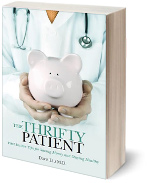Medical Second Opinions
When is it a good idea to get a second opinion?
Second opinions should strongly be considered when there is a potentially life threatening medical condition, like cancer, when the proposed treatment options are intensive or demanding, like chemotherapy or major surgery, or when there is a chance for a very bad outcome or complication, i.e. brain surgery. By having a second opinion, particularly in these high stakes situations, patients and their families will have the opportunity to have a second set of eyes double check to see if the original diagnosis and treatment plan are reasonable as well as a chance to hear someone else explain the problem which may be more understandable and enlightening.
With any other big decision – purchasing a new car or deciding to get married, for example – people instinctively seek out multiple opinions. Others voice their unsolicited opinion. When making a decision which could mean the difference between life or death, patients should not be shy about getting a second opinion. Patients should also ask their primary care doctor about their thoughts and understanding of the treatment plan of the first doctor and the need for a second opinion.
Why are patients reluctant to get second opinions?
Patients may be afraid that their doctor won’t take care of them in the future because they are asking for a second opinion. They may not feel the need to get a second opinion since they are comfortable with their doctor. They may not be aware that getting a second opinion is a good idea. They don’t know how to ask for a second opinion.
Do philosophies and treatment options vary among hospitals and medical practices?
Philosophies about treatment options can vary greatly depending on where and who the physician trained with, the physician’s field of practice, when the physician did their training, and the physician’s personal belief. Often for the same medical problem, different doctors, even within the same specialty, will have different recommendations and treatments. This is often a result of who they trained with and their clinical experience. Practice styles and philosophies also differ from the East Coast and West Coast.
For the example of leg pain due to a pinched nerve, some back surgeons will recommend early surgical intervention, while others suggest non-operative conservative therapy. If a doctor trained at a program that advocated watchful waiting, then it is more likely his philosophy is to be conservative. If his mentor, however, always recommended surgery quickly, then it is likely his own belief is that operating is more beneficial. After one year, research has shown that patients do equally well with either option.
For patients to see what the varying philosophies are, they will need to seek out different hospitals and practices. Even within a group practice, the doctors may have different approaches for the same problem.
What are the pros and cons of getting a second opinion online through institutions like The Cleveland Clinic and Partners Healthcare (through Harvard)?
Second opinions online or consultations without seeing or examining a patient are probably helpful if someone wants to have the blessing of a major medical institution like Cleveland Clinic. The other advantage is to get advice without traveling to these medical centers. While these second opinions have access to doctors’ notes, lab results, and imaging studies, these institutions don’t usually have their doctors examine the patients. This is the biggest potential problem of these programs.
Let’s for example say you wanted to buy a car. If you wanted to buy a car online, could you make an informed decision whether to purchase it based on its description (doctors’ notes) and pictures (imaging studies)? Would you be able to tell if the engine ran smoothly, the seats were comfortable, or the handling was just right based on the information you received online? For most people, doing the research and having bits of information isn’t a substitute for a test drive.
This is no different than having an online consultation. As doctors, one of the first things we learn is to treat the patient and not test results. People are more complex than simply blood tests, MRIs, and CT scans. Often pathology and radiology reports are qualified with the phrase “clinical correlation recommended”. This is the pathologists’ and radiologists’ way of telling the doctor who ordered the test to realize that the information they provided is only helpful in the context of the patient. Pathologists and radiologists know their limitations. Their expertise provides only a glimpse of the person and his medical condition. This is the main reason that medical students today still spend much of their time learning how to interview and examine a patient before they learn what tests to order.
If the online opinion was used to reaffirm another second opinion, where a patient was examined by a doctor, then this would be reasonable. It would be very concerning if this second opinion overturned or refuted a previous opinion particularly since the patient wasn’t examined. Doctor notes, test results, imaging reports provide only a partial picture of a patient or his condition.
 Get important exclusive advice and tips on how to save money while staying healthy.
Get important exclusive advice and tips on how to save money while staying healthy. Learn how to make intelligent choices in America's Healthcare System.
Learn how to make intelligent choices in America's Healthcare System.